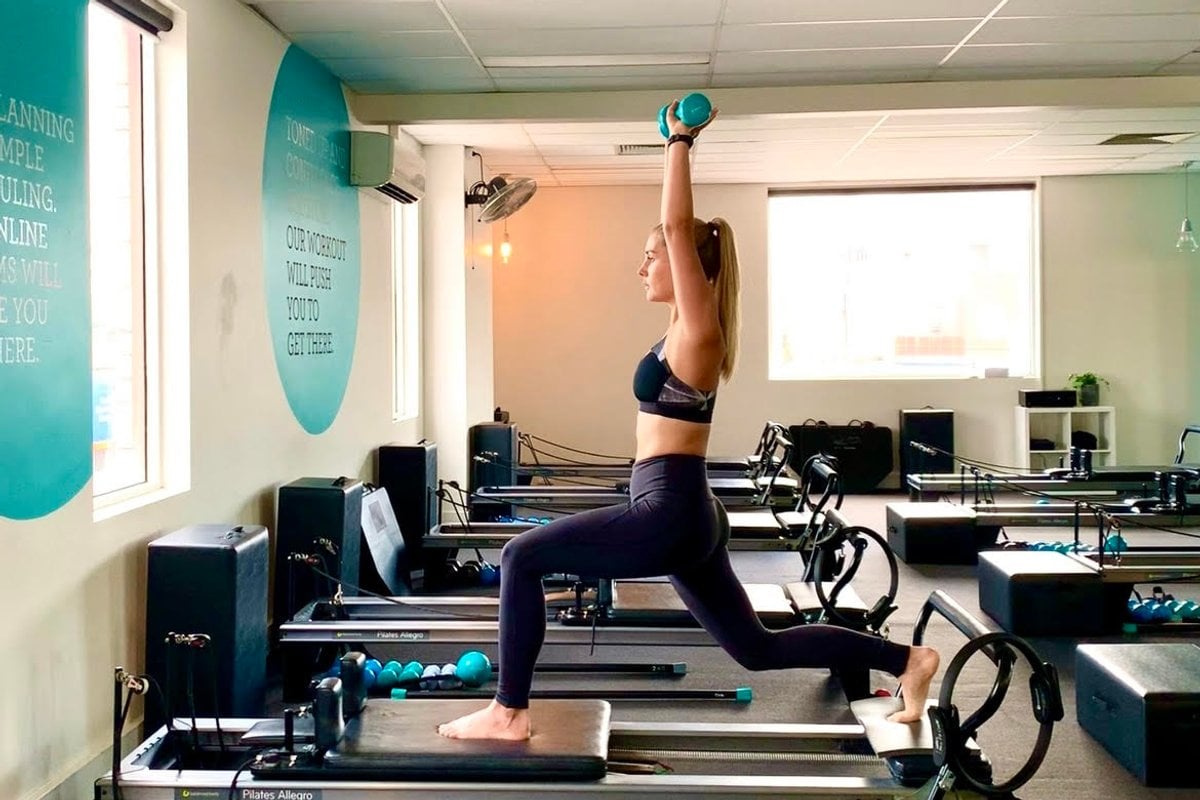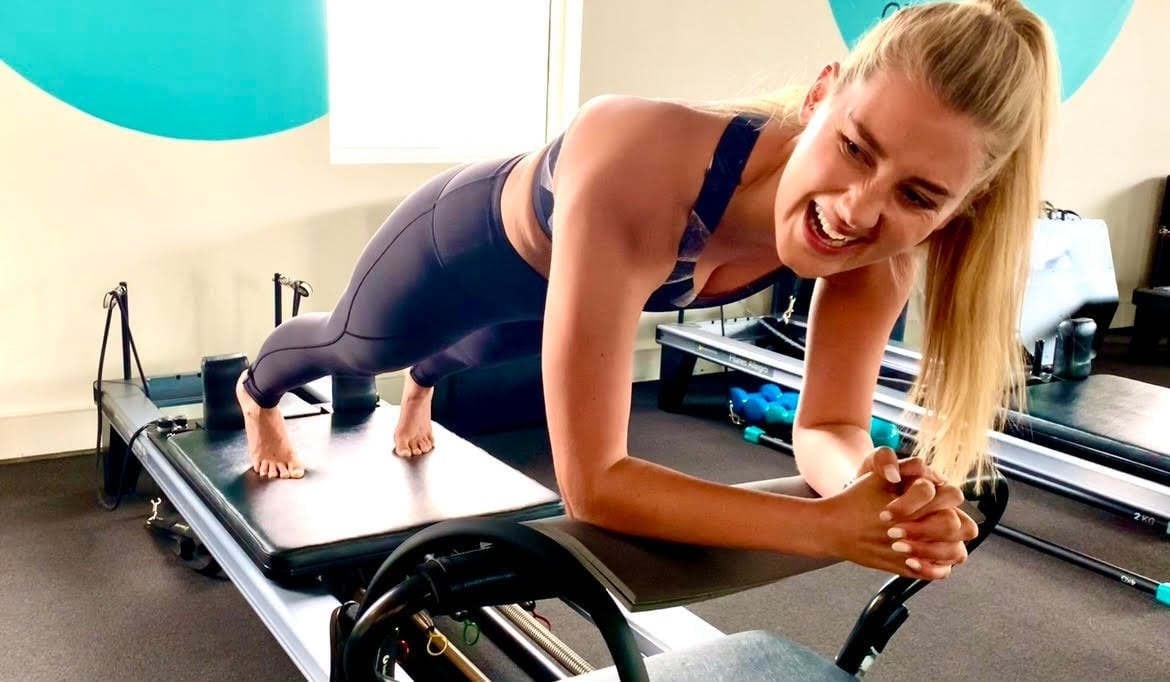
If you’ve ever put your back out, injured your knee, or strained a hammy, chances are you’ve been told to try Pilates.
It’s touted as a safer, gentler, and more joint-friendly style of exercise when compared with its high intensity counterparts, like HIIT or circuit training.
But don’t let that description fool you into thinking it’s an easy ride. In fact, Pilates, and more specifically, Reformer Pilates, can be one of the most challenging things you can put your body through. From the moment you lie down on that Reformer bed (noting "bed" is deceptive considering what you’re about to do is anything but restful), you’ll feel muscles you never knew you had coming out of hibernation and screaming at you to stop.
Watch: You may have heard a Pilates instructor say something along the lines of "engage your pelvic floor muscles", but what does that actually mean? Story continues after video.
Sound fun? It’s bloody addictive, I can tell you that much.
I taught for five years, and my favourite thing about the job was watching clients walk out of their first session with an expression like, "Where has this been all my life?" That being said, there are some important things to know before walking in that will help you get the most out of your first class. And hopefully, stop you from feeling totally overwhelmed when you first lay eyes on a room full of peculiar looking torture devices.

Top Comments